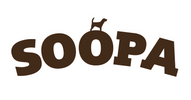
The Truth about Flea & Tick Treatment
With the summer months bringing dry and warmer temperatures, our wondrous British weather tends to release some visitors our four-legged friends aren’t ever happy to see.
Getting ready to pounce upon our pet’s skin and coats, fleas and ticks can lead to irritating itches and sore skin causing many of us to run to vet’s for flea treatment pricier than ever. But as a fundamental part of our pet’s monthly routine, this ever so necessary treatment appears to be harbouring some harsh realisations and ones we were shocked to uncover.
Troublesome Treatment
For many of us, purchasing our pet’s monthly flea and tick treatment is done without batting an eyelid. However, recent research from the FDA (Food & Drug Administration) studies have encountered 2 out of 3 dogs having adverse effects to the treatments meant to help save their skin from these pesky parasites.
Isoxazoline is the chemical compound used to prevent fleas and ticks from infesting your pet’s skin and coat. Often eradicating fleas, eggs and larvae in the first 24 hours, this strong and forceful ingredient is proving problematic with pet’s across the world. Being known to cause neurological effects in dogs and cats such as seizures, the FDA is warning veterinarians of the potential hazard this chemical can cause to our four-legged friends.
Problematic Products
Despite the terrifying prospect of these troublesome treatments, many pet owners have never and will never experience problems with their pet’s flea treatment. This side effect is rare and seen very rarely but with links between the two, it is only necessary for awareness to be raised about an issue that can be prevented if you see the signs.
Across the flea and tick treatments, the FDA have approved the following Isoxazoline products but we advise to seek advice from your vet if you have any worries about the treatment your four-legged friend is on:
- Bravecto (fluralaner) tablets for dogs
- Bravecto (fluralaner) topical solution for cats and dogs
- Bravecto Plus (fluralaner and moxidectin) topical solution for cats
- Bravecto 1-month (fluralaner) tablets for cats
- Credelio (lotilaner) tablets for dogs and cats
- Nexgard (afoxalaner) tablets for dogs
- Simparica (sarolaner) tablets for dogs
- Simparica Trio (sarolaner, moxidectin and pyrantel) tablets for dogs
- Revolution Plus (selamectin and sarolaner) topical solution for cats
Protecting your Pet
Like any reaction, we strongly advise seeking veterinary support if you believe your dog is reacting to the flea and tick treatment they have been given. Signs your dog could be reacting adversely to the treatment are:
- Vomiting
- Diarrhea
- Lethargy
- Decreased Appetite
- Tremors
- Seizures
However, as these symptoms are common with regular illnesses with your pet, it is important not to panic if your dog has an upset stomach after you have administered their flea treatment. It is important to always check with your veterinarian to rule out any illness in your furry friend. Like anything to do with our pets bodies, prevention is always better than cure so be mindful if you believe your dog is reacting in an unusual manner after their regular treatments.

Add a comment